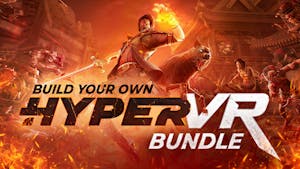The overall aesthetic of IsoMetro™ is a nod to city builder games from decades ago. Building on the base mechanics introduced by those original pioneers, IsoMetro™ leverages the vastly superior processing capabilities of today's "low end" hardware, to power a surprisingly nuanced and authentic economic simulation. Despite the nostalgic 90's visual aesthetic, it's not as simple as "big city, big buildings" -- economic effects are specific to every individual tile, encouraging you to think carefully about transit options and zoning policy if you want to see dense, vibrant city centers take shape.
Playing as the government, you can use your treasury funds to build public infrastructure such as utility facilities, transit networks, and civic service buildings. Meanwhile, buildings such as houses, shops, and factories will only be built in residential, commercial, and industrial zones respectively by the citizens themselves if you've met all their requirements. If your citizens can't get where they need to go, face utility shortages, are exposed to unacceptable levels of pollution, or are under-served in other ways, your infrastructure investments will go to waste. Meanwhile, a well-planned city will see healthy economic growth, and develop a positive cash flow from its tax base that can be used to invest in further expansion.
While building cities in IsoMetro™ is intended to be a comfortable, low-stress experience, the simulation also invites you to consider how the simplified concepts in the game world apply to the world we live in. Experiment with different transit options and zoning strategies to determine which approaches work better than others. Are roads and parking lots the way to go? Can you get away with not building even a single tile of road at all? Is a dense city core more profitable or is it better to have a metro area that sprawls far and wide?
IsoMetro™ brings you a balanced experience -- it can be thought-provoking if you choose to look closely at how your city works, but is also meant to be a satisfying and relaxing experience if you just want to watch your city evolve while you zone out to the varied music styles comprising the high-quality, 90-minute soundtrack.
More updates rolled out for IsoMetro, so heres another Metro Monday writeup. This weeks changes have been solely content expansion.
For starters, there are two new car models to improve the visual variety of traffic vehicles driving around town. These are a flashy yellow sports car, and a not-so-flashy tan minivan. Altogether, there are now 7 vehicle assets: four personal cars (the new sports car and the minivan, plus the existing sedan and pickup truck), the freight-hauling box truck, the public transit bus, and the subway traincars beneath the ground.
Next up, there are two new industrial buildings. First, if youve got enough demand in the Consumer Goods market and an adequate workforce, Petroligarch Corporation may choose to build a massive and intricate chemical processing facility that takes up a whopping 4x4 tiles. Moving on to the Advanced Products market, Mike Rowes Microchips an electronics manufacturer looking into candidate locations for its new CPU fabrication plant that is 3x3 tiles in size.
Finally, there is a new office highrise. Should you have 2x2 tiles of very well-connected commercial real estate available, Sharpe Systems will consider building a sleek, modern corporate office to serve clients using cutting-edge software at cutting-edge prices. We arent quite sure what they mean by that.
Its been two weeks since the prior Metro Monday (these are for announcing changes, and are not strictly weekly). Heres whats happened in that time:
On the asset side, there are two new buildings. First, Anderson Antimicrobial is a 3x3 tile chemicals facility. The archetype for this building is level 3 of consumer goods, found in dense industrial areas. Second, Monarchs Concourse is a 2x2 tile corporate office highrise. The archetype for this building is level 3 of office work, found in dense commercial areas.
On the code side, while there are plenty of things to keep improving (dont worry, we have a huge list of stuff to get to eventually), focus has been primarily on simulation performance. So, the simulation engine now includes a profiling framework, and after setting up plenty of labeled measurements within the sim engine code, we can meaningfully identify expensive operations with precision. These measurements are disabled by default since they incur a performance impact.
From profiling the operations involved in savefile loading, the time it takes to load save files has been dramatically improved for large saves, it is down to as little as a few percent of the previous load time.
Efficiency past startup, during the normal course of the game, is also improved. Due to improvements in a variety of mechanisms, from pathfinding, to economic re-evaluation queueing strategies, to more nuanced path removal when changing the transit prototypes of a tile, the economic engine is able to handle larger, denser cities without slowing down as much. So, you should be able to play in a world for longer before getting bored due to the sim engine spawning buildings too infrequently.
By no means are these optimizations the end of the road, but they already help to make the economy seem noticeably snappier, especially when there is a very complex transit network layout. Further, these are true optimizations that do not just throw more CPU threads at a problem, and thereby may be seen to reduce power consumption by the game in some situations which is something we do care about, on behalf of those who play on laptops. We may improve scaling across CPU cores later on, but our favorite optimizations are the kinds that improve the experience on hardware of any price, i.e. inclusive of lower-spec machines.
Heres a rundown of what happened between todays Metro Monday and the last one, which was also the first one.
Firstly, this past Friday we launched the game! The Free Edition, which has been available on itch.io for years as a rolling developer preview of sorts, is now also on Steam serving as a demo. The Gold Edition is now also available on both itch.io and Steam for purchase. We want to thank everyone who has tried either edition of IsoMetro so far, and beyond that were especially appreciative of those who have decided to fork over their hard-earned cash for the Gold Edition.
As far as the state of the game itself, weve rolled out a few updates since launch.
Theres now a Main Menu, so instead of jumping straight into an empty world with a clunky message box asking you whether to spawn the starter level, there are instead buttons on the main menu to start a new city in a few different ways. Since the visuals of the Main Menu only require loading a small subset of assets such as trees, the overall game is able to launch a bit more quickly. The existing Pause Menu has also been visually improved.
A bug with the tutorial wherein the first tutorial stage wouldnt highlight the UI buttons associated with it is resolved. A bug wherein the volume setting would be ignored initially after resetting the game loop (for example starting a new city) is also resolved.
The assets for the Franks Furniture industrial building in the Gold Edition have been overhauled to be much more visually interesting. Two new tenement highrise buildings have been added (there are now three tenement highrises in total).
Finally, we are gradually figuring out the ideal ways to use social media to not just broadcast the existence of IsoMetro but also to welcome bug reports, usability concerns, and feature requests. Even if youre reaching out about the Free Edition, we intend to take your feedback seriously. After all, both editions have plenty of code in common, so bugs in one are probably in the other. Bugs aside, suggestions for improving the IsoMetro experience are valuable to us even if were already aware of a potential improvement, duplicate suggestions still help us prioritize what we should work on next. For a full list of our socials, such as our Community Discord, check the IsoMetro site: https://isometro.live
On Friday this week, were going to launch IsoMetro because its finally in a state that we consider presentable. Our plan is to continue gradually improving the game after launch (refining the simulation engine, increasing the variety of buildings, adding new modes), so to take inspiration from a particular game that has its own facts released every Friday, well be releasing update news on Metro Mondays when there is something interesting to report on. In this first edition, well detail some recent improvements that you may not be aware of if the last time youve played the game was a few months ago (or never).
On the asset front, the Blender artists have been hard at work creating a slew of buildings that far exceed the detail level and variety of the Free Edition content. At time of writing, there are 16 residential buildings, 13 commercial buildings, 7 industrial buildings, 5 public service buildings, 8 utility buildings, and 5 vehicle models. These residential, commercial, and industrial buildings also economically interact across 12 distinct economic markets instead of just 3 (the Free Edition simply has the workforce, production, and shopping market types).
As far as code, along with plenty of small stability and usability improvements, weve rolled out vehicle visuals, so if youve got a road with some traffic, youll now see cars, trucks, and/or buses driving along it according to the traffic volume.
Speaking of trucks, markets are classified as either passenger or freight traffic now, and have different pathfinding rules, so you will no longer see industries shipping their goods to retail stores by bus.
Speaking of paths, the tools for visually inspecting tiles have been expanded so you can now take a look at exactly what paths your citizens are taking through a particular tile, with color-coded routes by the type of transportation theyre using.
Speaking of types of transportation, you can now construct underground subways, which unlike buses arent limited to the capacity of your roads, and can move citizens longer distances in the same amount of time.
Speaking of buses, the building placement tool now automatically orients buildings such as bus stops in a sensible direction, so if you want to build a bus stop next to a road, you dont need to manually rotate it anymore.
Speaking of building things next to roads, the game engine can now pick between car-dependent and car-free versions of buildings, so youll see driveways connecting houses to roads, and meanwhile if you remove a cherished bus or subway stop from a walkable neighborhood, youll notice existing buildings in the area scramble to demolish their gardens and common areas to make way for parking lots if driving is now their only viable option.
Finally, speaking of the very act of speaking of things, there is a context-aware tutorial which will explain basic mechanics in stages to help you get started more easily.
Overall, we hope that with this launch the game is enjoyable. Showing IsoMetro at conventions has already taught us some lessons and helped shape the game as it is today, so we look forward to integrating what we learn from feedback by initial Steam players into what we already have planned for further updates.
Minimum Setup
- OS: Ubuntu 18.04 LTS
- Processor: Intel i3 2100Memory: 2048 MB RAM
- Memory: 2048 MB RAM
- Graphics: Software Rendering
- Storage: 200 MB available spaceAdditional Notes: Disk space requirement will increase with new content.
Recommended Setup
- OS: Ubuntu 24.04 LTS
- Processor: AMD Ryzen 1200Memory: 8192 MB RAM
- Graphics: Integrated Graphics
- Storage: 1000 MB available space
[ 6425 ]
[ 3784 ]
[ 2906 ]
































